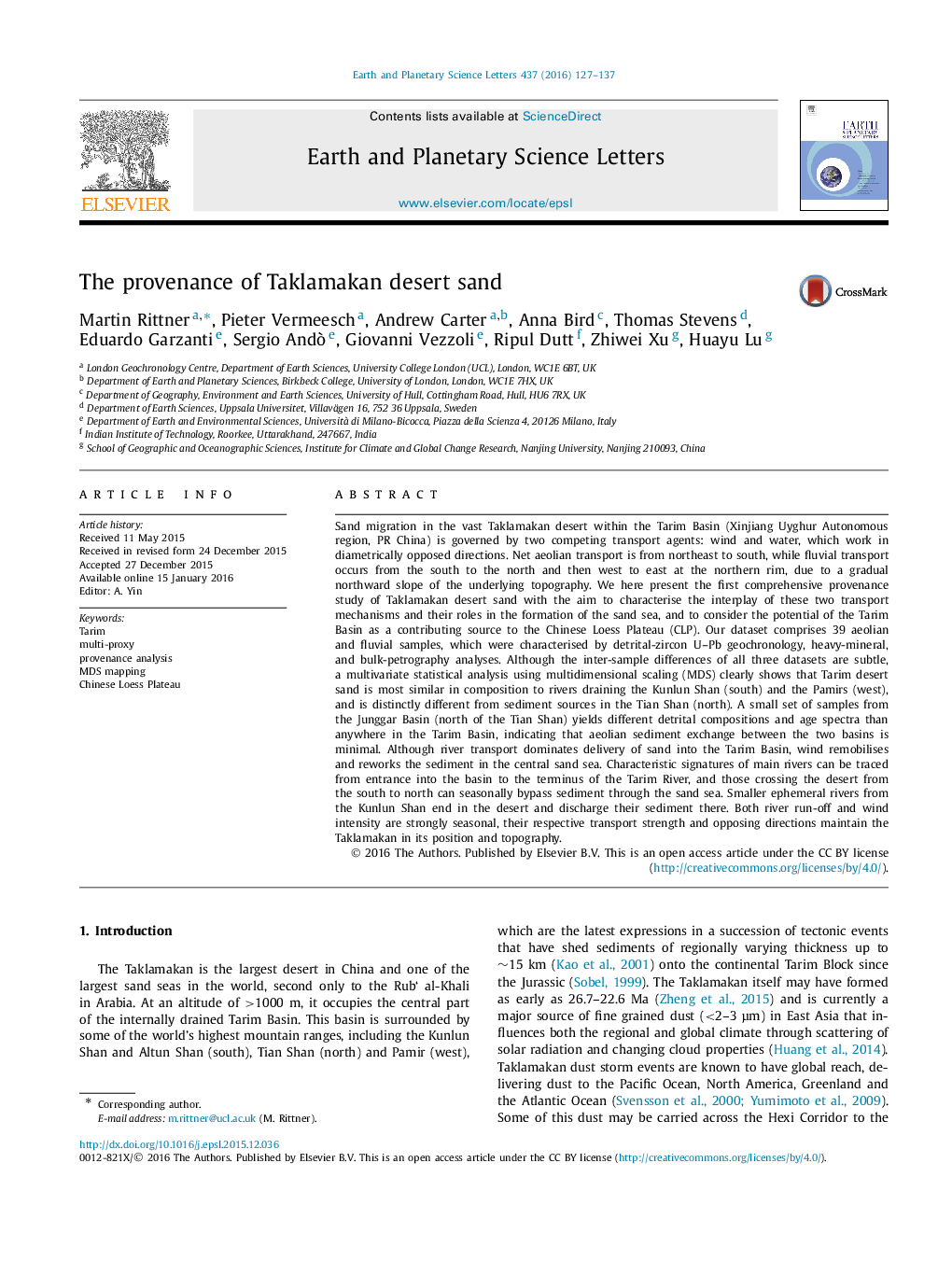| کد مقاله | کد نشریه | سال انتشار | مقاله انگلیسی | نسخه تمام متن |
|---|---|---|---|---|
| 6427675 | 1634719 | 2016 | 11 صفحه PDF | دانلود رایگان |

- The first comprehensive multi-proxy provenance analysis of the Tarim Basin.
- Taklamakan sand is derived from the Kunlun Shan, Altun Shan, and Pamir regions.
- Little sediment from the Tian Shan reaches the sand desert.
- Wind and water work in opposite directions, balancing sand supply and topography.
- Tarim Basin is no significant source to the Chinese Loess, nor is the Junggar Basin.
Sand migration in the vast Taklamakan desert within the Tarim Basin (Xinjiang Uyghur Autonomous region, PR China) is governed by two competing transport agents: wind and water, which work in diametrically opposed directions. Net aeolian transport is from northeast to south, while fluvial transport occurs from the south to the north and then west to east at the northern rim, due to a gradual northward slope of the underlying topography. We here present the first comprehensive provenance study of Taklamakan desert sand with the aim to characterise the interplay of these two transport mechanisms and their roles in the formation of the sand sea, and to consider the potential of the Tarim Basin as a contributing source to the Chinese Loess Plateau (CLP). Our dataset comprises 39 aeolian and fluvial samples, which were characterised by detrital-zircon U-Pb geochronology, heavy-mineral, and bulk-petrography analyses. Although the inter-sample differences of all three datasets are subtle, a multivariate statistical analysis using multidimensional scaling (MDS) clearly shows that Tarim desert sand is most similar in composition to rivers draining the Kunlun Shan (south) and the Pamirs (west), and is distinctly different from sediment sources in the Tian Shan (north). A small set of samples from the Junggar Basin (north of the Tian Shan) yields different detrital compositions and age spectra than anywhere in the Tarim Basin, indicating that aeolian sediment exchange between the two basins is minimal. Although river transport dominates delivery of sand into the Tarim Basin, wind remobilises and reworks the sediment in the central sand sea. Characteristic signatures of main rivers can be traced from entrance into the basin to the terminus of the Tarim River, and those crossing the desert from the south to north can seasonally bypass sediment through the sand sea. Smaller ephemeral rivers from the Kunlun Shan end in the desert and discharge their sediment there. Both river run-off and wind intensity are strongly seasonal, their respective transport strength and opposing directions maintain the Taklamakan in its position and topography.
Journal: Earth and Planetary Science Letters - Volume 437, 1 March 2016, Pages 127-137